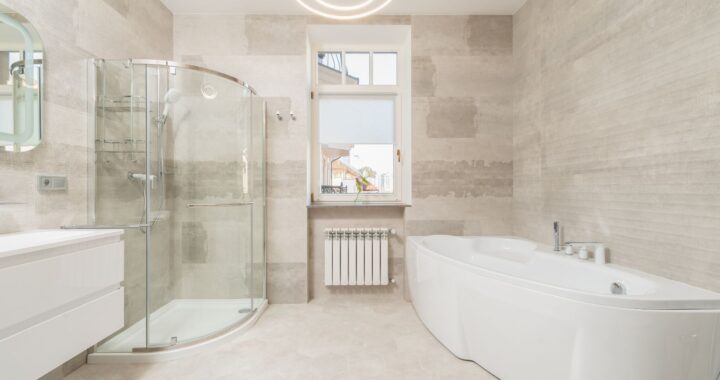Dispell The Heat: Eco-Friendly Solutions For This Summer

Keeping it cool is essential for your well-being and comfort during the summer as the temperatures rise. However, maintaining an eco-friendly technique to beat the heat and reduce the environmental impact is mandatory now.
To build a sustainable home, you improve the environment and the surrounding community. Incorporating eco-friendly and sustainable solutions into your home lowers the cost of running your home.
You can adopt simple methods like saving electricity, conserving water, and installing environmentally friendly appliances, making the home sustainable.
However, living in a sustainable home builds a healthier environment for the animals, your pet, the surrounding community, and yourself. In this article, you will discover a few eco-friendly solutions that will make you live in a healthier environment.
What Makes A Home Eco-Friendly And Sustainable?
A sustainable house is built with lower-impact, high-performance materials. They are efficient in terms of installing, manufacturing, and shipping.
Next summer, you can create a house with high-quality materials and systems that last longer, break less, and produce less waste.
To make your house more sustainable, you can consider every detail:
- Heat, ventilation, and air conditioner.
- Lighting.
- Appliances.
- Building material and methods.
- Decorating choices.
- Plumbing fixtures.
- Insulation.
- Energy generation from wind and solar.
- Use of smart system.
- Habit when it comes to regular maintenance and green cleaning.
Eco-Friendly Solutions to Keep Your House Cool
Eco-friendly living in sustainable housing is increasingly sought after. Create a functional and convenient home to spend a pleasant summer with your family.
Here is a list of eco-friendly solutions that will help your house cool.
Install Power Of Shades
Using shade is an effective and simple way to remain cool while being eco-friendly. Now, you can plant trees around your home and create natural shade. Hence, this will reduce the direct sunlight from entering your living spaces.
In addition, you can install retractable awnings and use blinds and curtains to block the sun’s heating firing at the hottest time of the day.
You can also insulate your wall with a ventilating garden as well. This will be a great alternative for people with a small home space.
Therefore, if you add plants inside your house, it can improve air quality.
Install Energy Efficient Fans
Using different types of fans at home is one of the easiest and most cost-effective ways to stay cool. Fans are cheaper to run than an air conditioner by just using a fraction of electricity consumed per unit.
You can look for a sustainable rating fan if you are looking for a ceiling fan. Therefore, this only applies to some types of windows, tabletops, or ceilings.
There are purifying fans; they are safe to use around children and pets as they clean the air in your room. It filters the pollutants to assist you in breathing while you sleep.
It is suggested that it has a timer with an automatic shut-off option when you look for products. This will conserve energy consumption at home.
Optimize Natural Ventilation
Instead of relying solely on air conditioning, one must use natural ventilation.
Opening windows during the cooler hours of the day will let in fresh air and create a cross-ventilation.
Installing windows screens allows cross-ventilation without leaving any unwanted insects indoors.
Upgrade To An Energy Cooling System
If coolers or air conditioning are necessary, consider upgrading to energy-efficient models. You can also search for a device with a high energy-efficiency ratio (EER) or that comes with the energy star. They usually generate less electricity while catering to the same cooling power.
Furthermore, there are heat pumps, which are modern, sustainable, and cost-saving for those who need to integrate cooling and heating in their business and home.
The tech enables you to draw energy from water, ground, and air to buildings that will not put the same strain on bills as the units consumed by an air conditioner.
Utilize Natural Cooling Methods
If you want to explore cool things, make your house cool with sustainability.
For instance, you can create a DIY air conditioner. You can place a shallow bowl of ice under the fan. The air blowing over the ice will make a cooling and refreshing breeze.
You can also cool your body with a cold shower or a towel on your wrist or neck.
Embrace Evaporative Cooling
Evaporative or swamp coolers provide a sustainable alternative to traditional air conditioning.
These systems draw in warm air and pass it over to water-moistened pads, which evaporate the air. Therefore, evaporative coolers consume less energy and utilize water as the primary cooling agent, making them a greener option.
Utilize Smart Thermostats
For eco-friendly surroundings, you can invest in a smart thermostat to regulate your home’s temperature efficiently. The device helps you understand your own colling choice and adjust accordingly to optimize the energy source.
Some smart devices can be controlled remotely, allowing you to adjust settings while away. Hence. This helps you to save money and energy.
Maximize Energy-Efficient Lighting
You can replace your traditional incandescent bulbs with energy-efficient LED lights.
Hence, traditional bulbs produce more waste and heat energy, contributing to the overall heating process in your house.
Similarly, replacing them with LED bulbs can consume less energy, emit less heat, and have a longer lifespan.
Staying cool this summer does not have to cater to making sacrifices on sustainability. When you implement these eco-friendly techniques, you can create a comfortable and clean space. It will eventually create an impact on reducing the overall carbon footprint.
Espace The Heat This Summer!
Those mentioned above are the tips that will guide you in building a sustainable house. You can create a sustainable environment by reducing waste, improving energy efficiency, and increasing durability.

Sustainability is the area of fast innovation in home building, lighting, and home systems. Some experts can audit energy and then advise you on fixing issues.
Hence, making small improvements can increase sustainability at home and create a bigger impact. Similarly, the techniques will also help you to fit into your budget.


 Thinking About Your Future? Here’s a Creative Way to Get Ahead
Thinking About Your Future? Here’s a Creative Way to Get Ahead  Retirement Budgeting: How to Make Your Money Work For You
Retirement Budgeting: How to Make Your Money Work For You  Shower Tray Myths Debunked: What You Really Need to Know
Shower Tray Myths Debunked: What You Really Need to Know